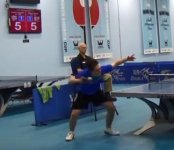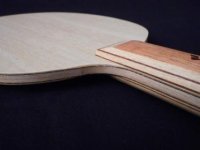This user has no status.
The controversy continues—in her semi-final match against Shibata Saki, Ding Ning had a let called against her for not tossing the ball high enough on one of her tomahawk serves. She obviously isn't comfortable tossing the ball higher with the tomahawk, as she finished the match without attempting it again.
What is wrong with tossing the ball higher on the tomahawk? Can't she just practice and adjust her timing to strike the ball?
What is wrong with tossing the ball higher on the tomahawk? Can't she just practice and adjust her timing to strike the ball?












